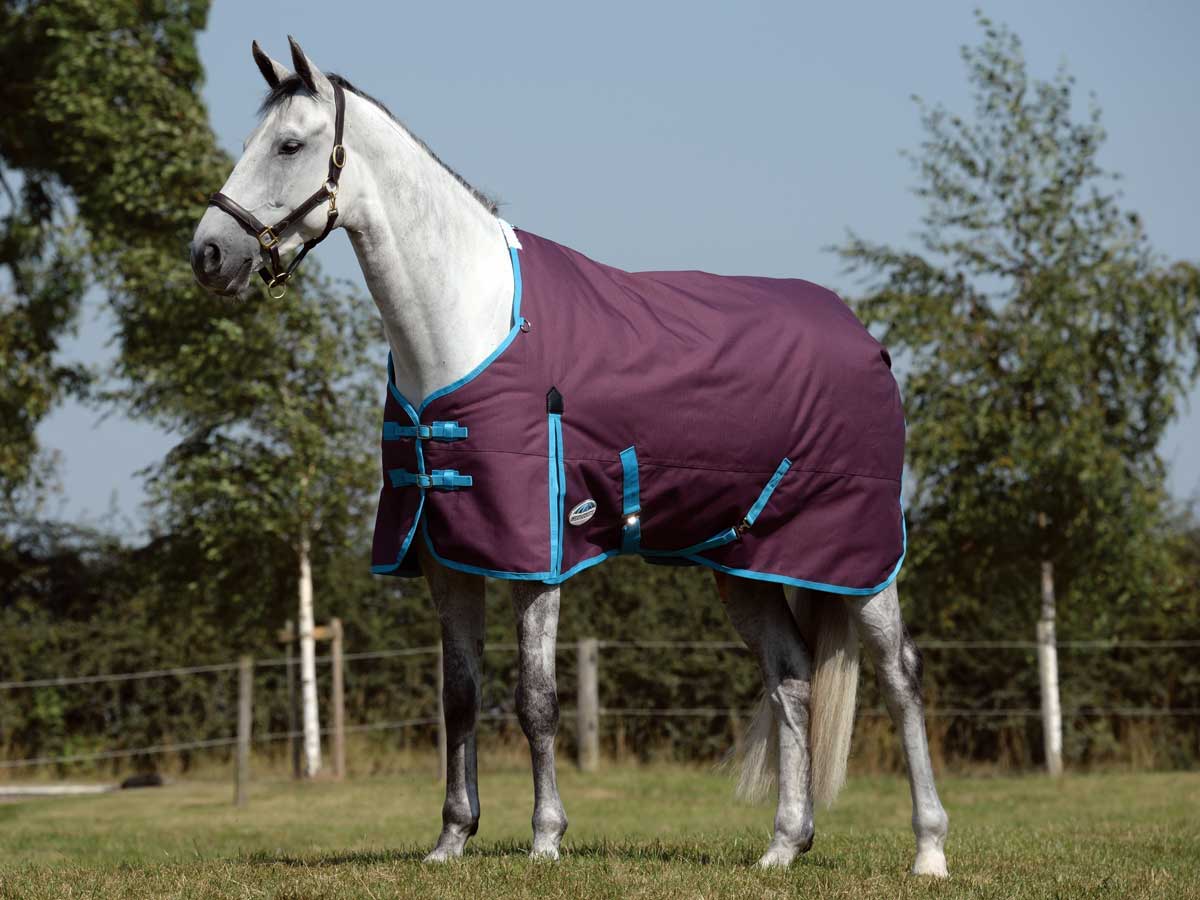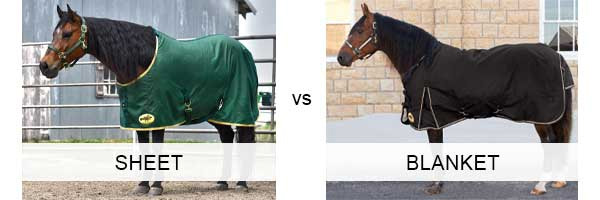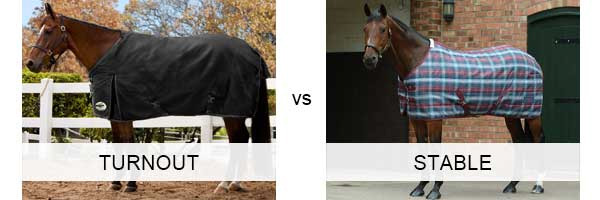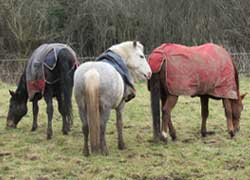
We understand that blanketing horses can seem overwhelming. But take a deep breath, friends, we’re here to help simplify with this in-depth but simplified horse blanketing guide. Continue reading for understanding of reasons to blanket horses, different horse blanket types, sizing horse blankets, cleaning horse blankets, helpful tips and more!
First, Why Horses Are Blanketed
There are two main reasons horse owners blanket their horses and ponies:
- To keep horses sleek for the show ring
- To provide comfort during inclement weather conditions
Different Horse Blanket Types & When to Wear Each
There is much to consider when selecting a horse blanket, details such as age, body condition and coat thickness. Additionally, horses across the country experience a variety of climates, weather conditions and stabling environments. Luckily, just as your closet holds clothes tailored to the day and season, there are different types of horse blankets available, too, so you can select just what your horse needs when he needs it.
Let’s first look at a few horse blanketing basics -- sheets vs. blankets and turnout vs. stable. How familiar are you with the differences between each?
Sheets vs. Blankets

A horse sheet is lightweight and is perfect for those mildly cold or windy days. They have no fill.
A horse blanket offers fill, which is essentially a form of insulation sewn into the blanket to add warmth (think of your poufy winter coat!) The higher the fill number on a blanket, the cozier the pony on those cold days.
Turnout vs. Stable

Sheets and blankets come in two varieties: turnout and stable. To put it simply, turnout sheets and turnout blankets are intended for horses at turnout. They will feature waterproof material to keep pasture ponies dry. Without waterproof technology, a wet horse blanket could only make your horse colder, which is of course not what was intended!
Stable sheets and stable blankets are ideal for horses kept inside a stable and are not made from waterproof material. They serve an important purpose by keeping stabled horses comfy, warm and sleek.
Understanding Warmth & Durability
When you are selecting a horse blanket, you will notice a few number sets under the product descriptions, noting denier and fill.
Denier denotes the durability of a horse blanket or sheet. It measures nylon fiber density on the outer material of horse blankets. Denier ranges from 70 to 2400D. The higher the denier, the more durable it is for those tough-on-blanket horses (you might have one or two in mind!)
As we shared earlier, fill is padding that adds an extra layer of warmth to your horse’s blanket. Both with denier and fill, the higher the number, the tougher or warmer the blanket’s material will be.
Do you know the degree of blanket warmth your pony needs and when? We put together this easy-to-reference chart to help as a guide!
| Weather Conditions | Grams of Fill |
|---|---|
| 50-60° | Sheet (0g) |
| 40-50° | Light blanket (100g) |
| 30-40° | Light or medium blanket (150 to 250g) |
| 20-30° | Medium or heavy blanket (200 to 300g) |
| Below 20° | Heavy blanket (300 to 400g) |
Measure your horse for a blanket or sheet

Did you know that wardrobe malfunctions happen to horses, too? It’s true! If a horse’s blanket or sheet isn’t properly fitted to him, it could slip off to the side, which could cause him to trip or tangle, possibly resulting in injury.
Learn how to measure a horse for a blanket with these quick and simple horse blanket sizing steps. When measuring your horse, start from the center of his chest and measure around the widest part of the shoulder, along the barrel and around the widest part of the hindquarter to the center of the tail. Keep your line horizontal to the ground. His blanket measurement will be the same as the number of inches measured. If the exact number of inches is not available to select from, size up to the nearest measurement.
5 Tips for the Perfect Horse Blanket Fit
Before buckling your horse’s new duds and sending him to the back field amuck, double-check your measurements to make sure the blanket is a perfect fit. First, put on the horse blanket, and check that:
- Fastened chest straps overlap slightly and fit snug but not too tight
- Surcingles fit loosely with about four fingers width between his stomach and the straps
- There is only one hand’s width between each leg strap on your horse’s thighs
- The end of the blanket stops just above where the tail starts
- Fabric is not pulling tightly against his shoulders or blanket hangs too low
Storing & Cleaning Horse Blankets
Properly storing and cleaning horse blankets and sheets will help them last.
You also can extend the life of your horse’s blanket by keeping it up off of the ground and away from opportunistic rodents who may look at your gorgeous new blanket as a home (or worse -- a snack!)
During the colder months, when you may appreciate quick access to your horse’s blankets, you can store blankets with blanket racks, which can hold several blankets at once, keeping tack rooms tidy and fluff-free. Or, you can look into individual solutions for blanket storage, such as a horse blanket wall rack to hang on your horse’s stall door or a blanket storage bag.
horse blanket rack

After your horse’s blankets have protected them from the rain, snow and the muck of cold weather, it’s time for a good cleaning. You can either opt for cleaning horse blankets yourself, or, you can send them to a blanket laundry service.
Cleaning horse blankets may be easier than you think! Just follow these steps.
3 Steps for Cleaning Horse Blankets
- Pre-wash - Use stiff brush to remove excess horse hair, mud and dirt. Hose off blanket, and hang to dry.
- Wash - Wash using a horse blanket detergent, such as Saddle Pad & Horse Blanket Wash by Absorbine.
- Dry - Hang horse blankets to dry in a shady area to avoid color deterioration of the material.
*Follow manufacturer’s cleaning instructions for best results.
Shop horse blankets for sale at Valley Vet Supply to ensure your horse is snug as a bug with a high-quality horse blanket or sheet that meets his specific needs.
All photographs and images courtesy of Valley Vet.
This article originally appeared on Valley Vet and is published here with permission. Valley Vet Supply was founded in 1985 by veterinarians for people just like you - people who want the very best for their four-legged friends and livestock.
There are more informative articles in our section on Health & Education.

































